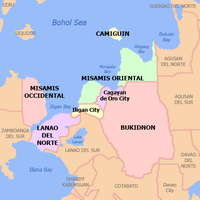
Northern Mindanao is an administrative region in the Philippines, designated as Region X. It comprises five provinces: Bukidnon, Camiguin, Misamis Occidental, Misamis Oriental, and Lanao del Norte, and two cities classified as highly urbanized, all occupying the north-central part of Mindanao island, and the island-province of Camiguin. The regional center is Cagayan de Oro. Lanao del Norte was transferred to Northern Mindanao from Region XII by virtue of Executive Order No. 36 in September 2001.

Zamboanga del Norte, officially the Province of Zamboanga del Norte, is a province in the Philippines situated within the Zamboanga Peninsula region in Mindanao. Its capital is Dipolog and the province borders Zamboanga del Sur and Zamboanga Sibugay to the south, Misamis Occidental to the east, and the Sulu Sea to the west.

Zamboanga Sibugay, officially the Province of Zamboanga Sibugay, is a province in the Philippines located in the Zamboanga Peninsula region in Mindanao. Its capital is Ipil and it borders Zamboanga del Norte to the north, Zamboanga del Sur to the east and Zamboanga City to the southwest. To the south lies Sibuguey Bay in the Moro Gulf.
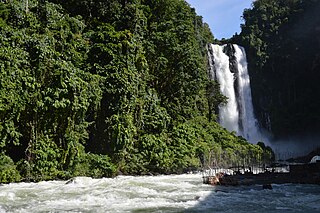
Lanao del Norte, officially the Province of Lanao del Norte, is a province in the Philippines located in the Northern Mindanao region. Its capital is Tubod.
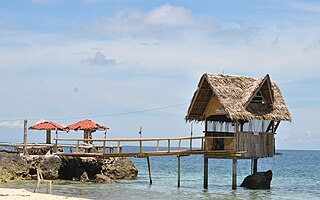
Iligan Bay is a bay in Mindanao Island in the Philippines. The bay is part of the Bohol Sea, and curves into the northern coast of Mindanao Island.
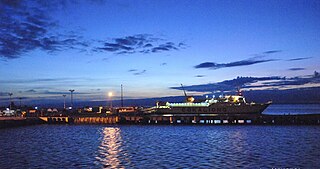
Panguil Bay is an arm of Iligan Bay in Mindanao, Philippines. The bay forms the natural boundary separating the Zamboanga Peninsula from the rest of the island of Mindanao. It borders the provinces of Misamis Occidental, Zamboanga del Sur, and Lanao del Norte. Important cities and municipalities on its coast are Ozamiz and Tangub in Misamis Occidental, and Tubod, the capital of Lanao del Norte.

Aloran, officially the Municipality of Aloran, is a 4th class municipality in the province of Misamis Occidental, Philippines. According to the 2020 census, it has a population of 27,934 people.

Concepcion, officially the Municipality of Concepcion, is a 6th class municipality in the province of Misamis Occidental, Philippines. According to the 2020 census, it has a population of 9,324 people.

Oroquieta,(formerly/originally known as Layawan), officially the City of Oroquieta, is a 4th class component city and capital of the province of Misamis Occidental, Philippines. According to the 2020 census, it has a population of 72,301 people.
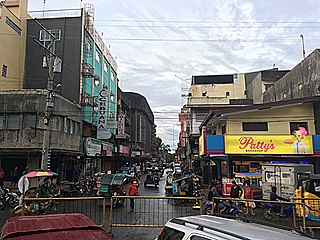
Ozamiz, officially the City of Ozamiz, is a 3rd class component city in the province of Misamis Occidental, Philippines. According to the 2020 census, it has a population of 140,334 people.

Plaridel, officially the Municipality of Plaridel, is a 3rd class municipality in the province of Misamis Occidental, Philippines. According to the 2020 census, it has a population of 39,840 people.

Tangub, officially the City of Tangub, is a 4th class component city in the province of Misamis Occidental, Philippines. According to the 2020 census, it has a population of 68,389 people.
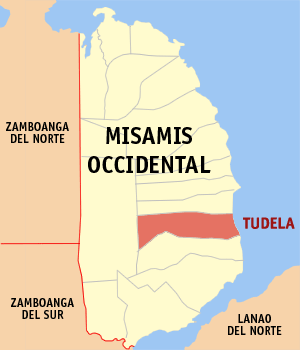
Tudela, officially the Municipality of Tudela,, is a 4th class municipality in the province of Misamis Occidental, Philippines. According to the 2020 census, it has a population of 28,599 people.

Dumingag, officially the Municipality of Dumingag, is a 2nd class municipality in the province of Zamboanga del Sur, Philippines. According to the 2020 census, it has a population of 48,881 people.

Kolambugan, officially the Municipality of Kolambugan, is a 4th class municipality in the province of Lanao del Norte, Philippines. According to the 2020 census, it has a population of 28,265 people.
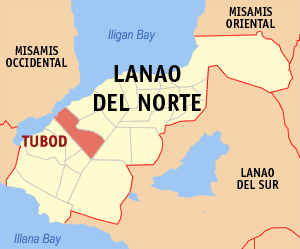
Tubod, officially the Municipality of Tubod,, is a 2nd class municipality and capital of the province of Lanao del Norte, Philippines. According to the 2020 census, it has a population of 60,182 people.
The legislative districts of Misamis Occidental are the representations of the province of Misamis Occidental in the various national legislatures of the Philippines. The province is currently represented in the lower house of the Congress of the Philippines through its first and second congressional districts.

Labo Airport, also known as Ozamiz Airport, is an airport serving the general area of the city of Ozamiz in the Philippines. It is the only airport in the province of Misamis Occidental. The airport is classified as a community airport by the Civil Aviation Authority of the Philippines, a body of the Department of Transportation that is responsible for the operations of not only this airport but also of all other airports in the Philippines except the major international airports. It is one of only two community airports in the Philippines with commercial operations, but one of the busiest in Mindanao in terms of aircraft movement and passenger traffic.
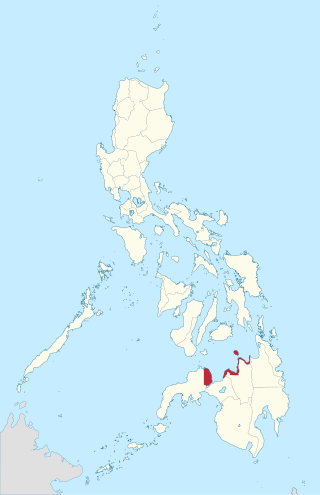
Misamis was a province of the Philippines located in Mindanao. Originally a Spanish-era district, it became a chartered province on May 15, 1901. The province was dissolved in 1929.
Port Management Office Misamis Occidental/Ozamiz is one of the port management offices of the Philippine Ports Authority which oversees all government and private ports in the Province of Misamis Occidental, with the code MOZ.






























